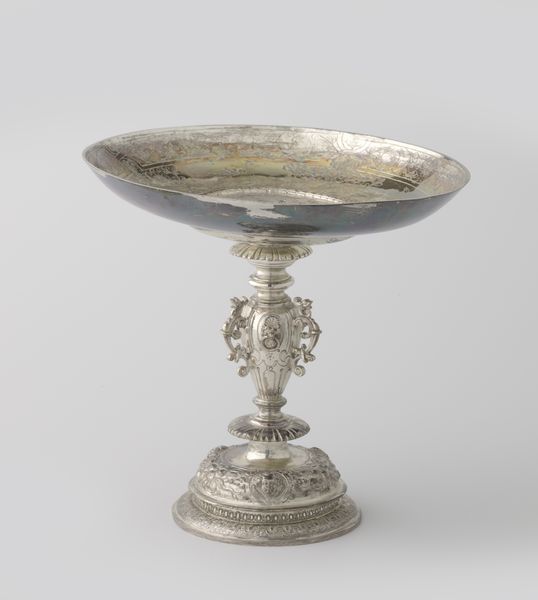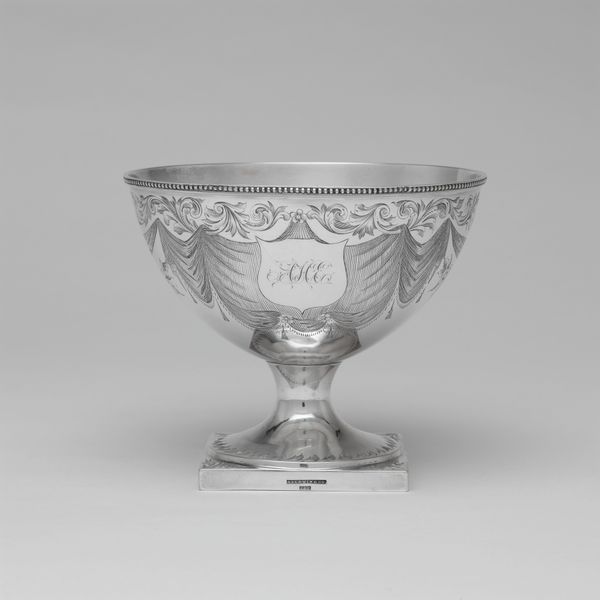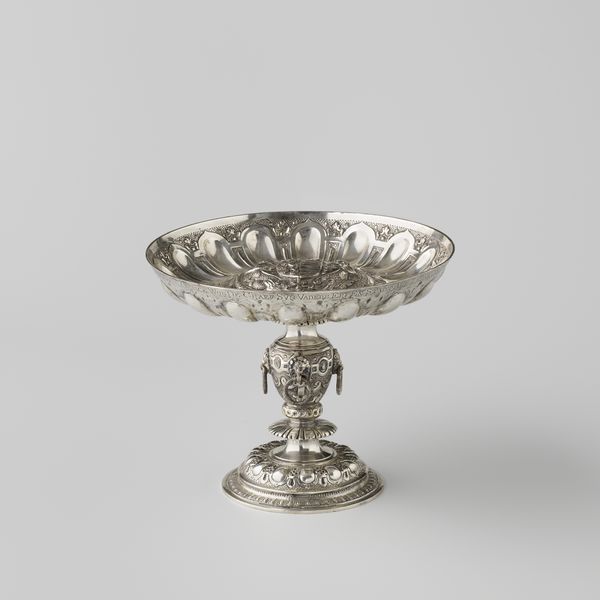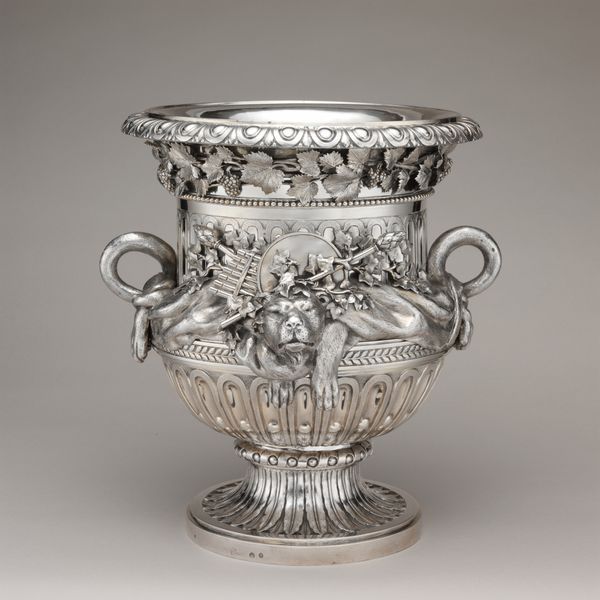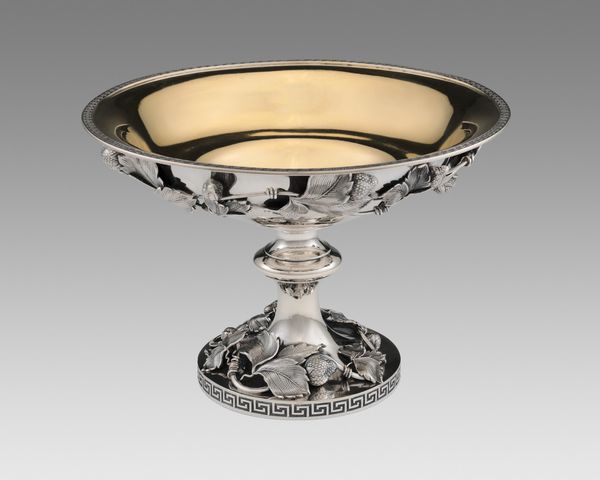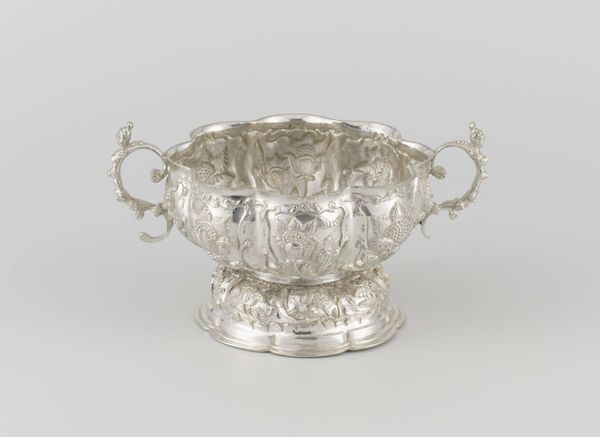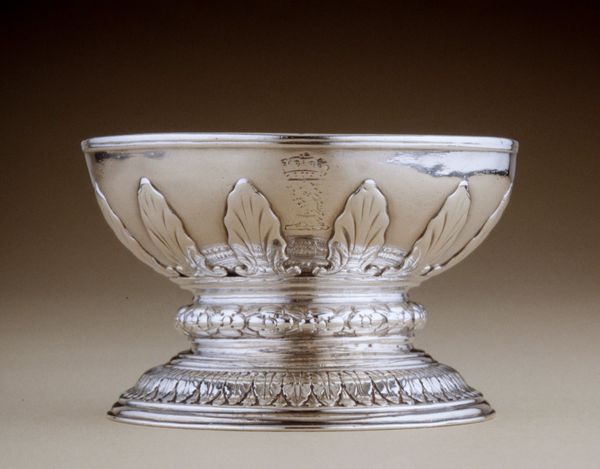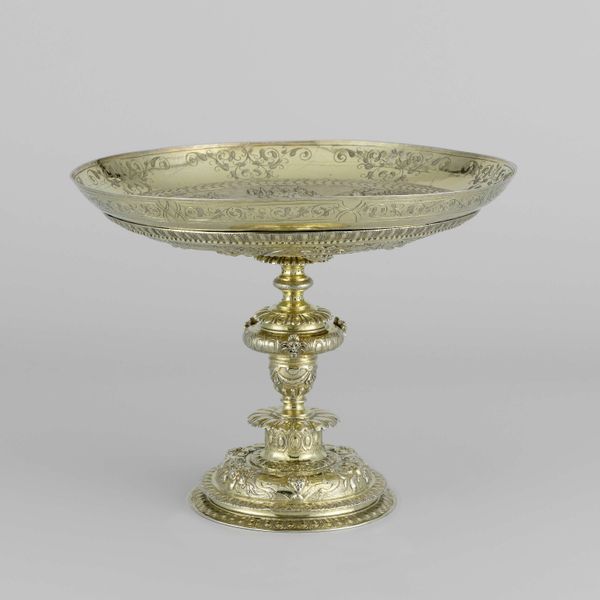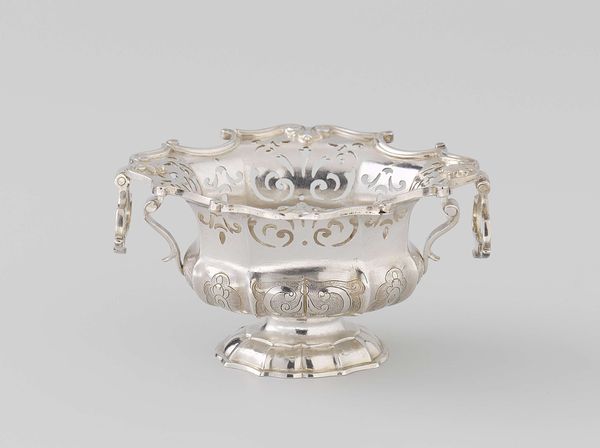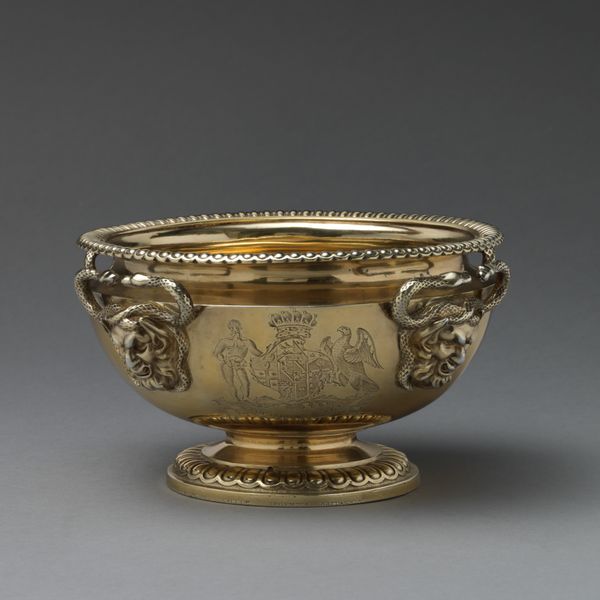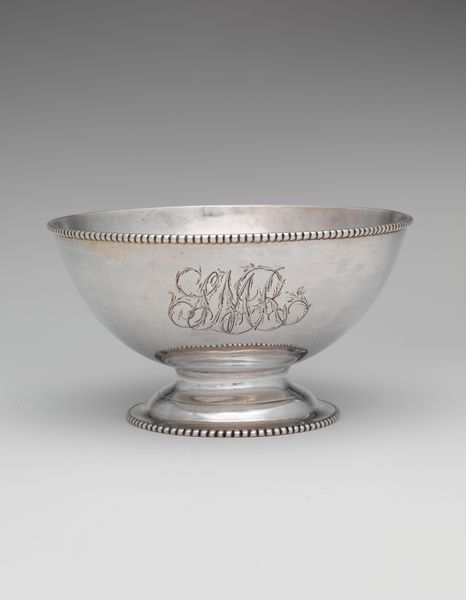
silver, metal
#
neoclacissism
#
silver
#
metal
#
stoneware
#
ceramic
#
united-states
#
decorative-art
Dimensions: Overall: H. 4 9/16 in. (11.6 cm); 15 oz. 19 dwt. (495.4 g) Lip: Diam. 6 5/16 in. (16 cm) Foot: 3 3/4 x 3 11/16 in. (9.5 x 9.4 cm)
Copyright: Public Domain
Curator: This beautiful "Waste Bowl," crafted by Joseph Lownes between 1797 and 1803, resides here at the Metropolitan Museum of Art. Editor: The craftsmanship strikes me immediately. There's a coolness, a polished reserve, almost like liquid metal frozen into form. And is that an inscription? Curator: Indeed, note the medium: It’s neoclassical, formed of silver and meticulously worked. These bowls, part of tea services, reveal much about material culture of the period and class. It speaks volumes about colonial economies too. Editor: The monogram adds a layer of personal narrative, doesn’t it? Initials intertwined; likely belonging to a family of some standing. What does the 'waste bowl' imply about the rituals of tea drinking at the time? Curator: Waste implies refuse, yes, but within elite social rituals. Think about the labor to extract the raw materials, to transport them. These acts show an excess on labor available that supported lifestyles in post colonial United States. Editor: Waste can have a cultural function, beyond practical usage. Did its presence communicate a degree of sophistication and refinement, the ability to ‘waste’ deliberately and artfully? Perhaps the material even carried a significance: Silver’s connection to status, purity, even moon and lunar cycles and water as vessel. Curator: Fascinating point. What could this ritualistic ‘wasting’ signal to guests? Who was the targeted consumer of these aesthetic displays of privilege? These bowls reflect the construction of elite identity through labor. Editor: We consider the legacy of symbolic communication. I now contemplate the cultural narratives embedded, the unwritten etiquette dictating its use and significance. It asks more probing questions about history: who it was made for, how they viewed this emblem. Curator: Considering these bowls offers pathways to reflect and evaluate who participated in shaping an emerging national identity within a social class. We are now left contemplating about social power during tea. Editor: These symbolic objects continue communicating—offering insights into ritual.
Comments
No comments
Be the first to comment and join the conversation on the ultimate creative platform.

